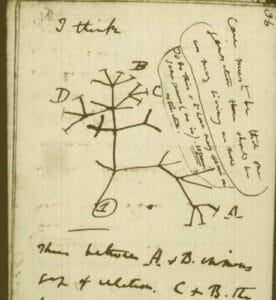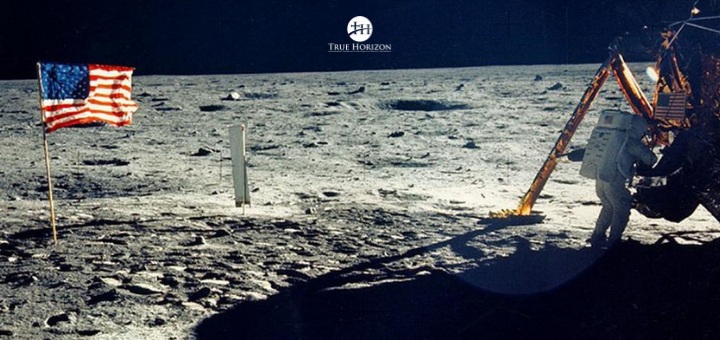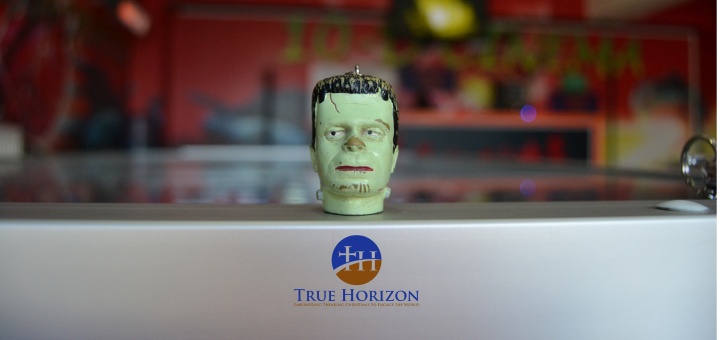Revisiting Francis Collins – Theistic Evolution
The Language of God is a thoughtful biography of Francis Collins‘ journey from hard-core atheist to devout Christian. It’s also a well-written analysis of the relationship between science and faith. So, in the wake of recent news reports about Collins’ impending resignation as Director of the National Institutes of Health (NIH), I dusted off an old copy of his book to re-read it. I had forgotten how much I enjoyed it. But the book was written in 2006. A lot has changed since then. Namely, one of Collins’ most compelling arguments for Darwinian Evolution has been undermined by new discoveries. That’s good material for a scientific debate. Unfortunately, that’s not the end of it. We’ve also witnessed the professional ethics Collins has exhibited in his time at NIH. As a result, it’s time to revisit the Language of God … and the work of its author.
The Language of God
Part autobiography, part scientific treatise, Francis Collins’ book, The Language of God, was wildly popular 15 years ago. Its title alluded to the divine implications that sprout from the incredible intricacy and beauty of the DNA double-helix. But the book was about much more than that. Collins handled tough questions about the problem of evil and an analysis of worldviews. And he did it in an easy-to-read, compelling narrative that paralleled his personal faith journey. His discussion of the relationship between science and faith was fantastic. And though I disagreed with his conclusions, his presentation and comparison of Atheism/Agnosticism, Creationism, Intelligent Design, and Theistic Evolution was fair to each point of view.
If you’ve never read the book, I would highly recommend it. But there are some important issues to keep in mind when you do.
Universal Common Descent (UCD)

One of Collins’ objectives in the book was to defend Universal Common Descent. This is the idea that all life has evolved from the first single-celled organism that appeared on Earth. Darwin himself envisioned the relationship between the various lifeforms we see today as a tree that originated with that first life. The different branches of the tree are the different kingdoms, phyla, families, genus, and species that we all learned about in high school.
Don’t miss the point: All life is related. We not only share common ancestors on our respective branches of the evolutionary tree — apes, chimpanzees, and humans for instance. But all those branches are connected to the trunk of the tree. All life shares a single, universal common ancestor.
This is what I call the Big ‘E’ Theory of Evolution. And Francis Collins endorses it completely. On page 200 of his book, he makes that point crystal clear in a list of premises that led him to accept theistic evolution. Those premises include the following:
- Once Evolution got under way, no special supernatural intervention was required.
- Humans are part of this process, sharing a common ancestor with the great apes.
So, what is the evidence for this?
The Fossil Record
The fossil record has always been touted as evidence for the “fact of Evolution.” But, beyond a broad appeal to the gradual emergence of major lifeforms, Collins spends very little time in his book talking about the fossil record. There are two reasons for that. First, “a vast majority of organisms that have ever lived on Earth have left absolutely no trace of their existence.” And, second, “the timeline revealed by the fossil record is woefully incomplete” (94).
Please note that these are Collins’ words, not mine.
As Phillip Johnson put it many years ago in his book, Darwin on Trial, “… if Evolution means the gradual change of one kind of organism into another kind, the outstanding characteristic of the fossil record is the absence of evidence for Evolution” (50).
The truth is that the fossil record actually undermines Evolution. There is no pattern of incremental emergence of life. Instead, the fossil record is full of dramatic discontinuities. And, unlike the gradual changes predicted by Darwinism, fossil records show the abrupt arrival of species that seem to appear out of nowhere without precursors.
Genetic Evidence For UCD
Because the fossil record is suspect, traditional Darwinism has been replaced by Neo-Darwinism. Neo-Darwinism posits that Evolution occurs by insidious changes at the genetic level. And that’s exactly where Francis Collins goes to make his case. His argument for UCD rests on the existence of genetic markers inside our DNA. His claim is that “the placement of humans in the evolutionary tree of life is only further strengthened by a comparison of our closest living relative, the chimpanzee.” It reveals that “humans and chimps are 96% identical on the DNA level” (137). As a result, researchers can construct the “Tree of Life” by analyzing these genetic sequences. They connect related species by identifying their similarities.
Since then, we’ve learned that the similarities in our DNA are greatly exaggerated. And the implications of that exaggeration don’t support UCD or Evolution in the ways Collins thought they did in 2006. Instead, they actually strengthen the case for Intelligent Design.
An Exaggerated Point
Collins’ claim that “humans and chimps are 96% identical on the DNA level” is misleading. When he says that, he is referring only to the portion of our DNA that contains the instructions for building our various body parts — the DNA that “codes for proteins.” The misleading flaw in this is that it only accounts for 2-3% of our total DNA. And that means that the 96% similarity he’s talking about only appears within that 2-3%. When you compare the entire DNA sequences, the similarities between chimp and human DNA drops to about 80%.
Junk DNA
The more important point is this. When he wrote those words in 2006, the section of our DNA that codes for proteins was thought to be the only part that mattered. The other 97% of our DNA was considered to be “junk” — useless, genetic “flotsam and jetsam” (136) leftover from hundreds of millions of years of Evolution’s trials and errors. In other words, the assumptions of neo-Darwinism drove the conclusion that the rest of the DNA was nothing but junk.
But something funny happened on the way to the Evolutionary party. We have since discovered that so-called “junk DNA” isn’t really junk at all. Stephen Meyer, the Director of the “Center for Science and Culture” at the Discovery Institute, has written about this extensively. It turns out that much of this section of our DNA is really a digital operating system that controls the timing and expression of other DNA data files. That is a far different thing. The so-called “junk” exhibits an attribute of high-tech software systems. This isn’t evidence for Evolution. It’s been a prediction of Intelligent Design advocates about “junk DNA” since the 1990s.
Francis Collins stopped using the term “junk DNA” as long ago as 2007 for this reason. Good for him.
Building The Tree
The same assumptions that went into labeling “junk DNA” also undermine Collins’ claim that “a computer can construct a tree of life based solely upon the similarities of the DNA sequences of multiple organisms” (129). Of course it can. The algorithm designers wrote their program to do just that. Their software will construct a tree regardless of the data inserted into it. The tree is not a consequence of the data. It’s the consequence of an algorithm — a pictorial projection of the programmers’ circular reasoning.
The algorithm does produce a similar tree if you compare the same protein molecule in both a chimp and a human. But that is based on the program’s built-in presuppositions. In theory, the tree of life should look the same no matter what genetic sequences you compare. In actuality, if you compare different genes (bone -vs- organ for instance) you get a wild divergence in the shape of your tree.*
Revisiting Collins’ View of Evolution
There is plenty more evidence that undermines both classical and neo-Darwinian orthodoxy, including: the origin of genetic information itself, the origin of life, orphan genes, and the data processing machinery of life. One new study has even discovered that proteins can communicate with one another at a distance. This ability to “long-distance dialogue” is something that has only before “been observed in artificial systems, but the Weizmann study is the first to show it takes place in the DNA of living organisms.”
Evidence like this should compel intellectually honest scientists to reconsider their rejection of Intelligent Design. A materialist view of evolution certainly can’t explain any of it. And that’s why, as helpful and Christian-friendly as it is, Francis Collins’ Language of God needs to be revisited and revised.
We can discuss those issues and argue those points until we’re blue in the face. But, wherever one lands in the debate between Theistic Evolution (Collins’ view) and Intelligent Design, what you think about the topic of Evolution and the design of life is not a matter of salvation. It’s a secondary issue. And even though I think defending theistic evolution has severe theological problems, I could politely disagree with someone who offered it a thoughtful defense.
But there is more to the story of Francis Collins that demands revisiting. The consequences of his professional ethics are another topic altogether. And that will be the subject of my next post.
- For a full discussion of these issues, you can listen to Frank Turek’s interview with Stephen Meyer on the I Don’t Have Enough Faith to Be an Atheist podcast dated September 10, 2021.






